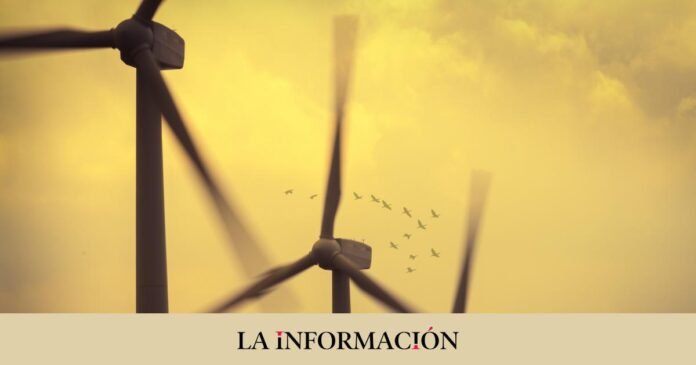Europe built 19 gigawatts (GW) of new wind power capacity in 2022, of which 16 GW were concentrated in European Union countries. This represents an increase of 40% compared to the previous year and the figures invite optimism, but the reality is very different. This is stated by the European employers’ association in the WindEurope sector, which includes the Spanish companies Iberdrola, Repsol, Acciona Energía and Siemens Gamesa.
The association sends several alert messages. Consider that the supply chain that encompasses the manufacture of wind turbines “needs to grow urgently.” “Europe does not have enough factories to build all the new turbines it wants,” the employers warn. According to the latest data available from WindEurope, Europe is home to some 250 production centers, which is 31% of the 800 that are operational worldwide. Germany and Spain are the best positioned countries, with 82 and 41 facilities, respectively. In addition, they are the only two in which all the pieces that make up a wind turbine are assembled. For its part, China is the main market with 45% of the centers (360).
In this way, the employers request that under the Net-Zero Industry Law, which will be approved by Brussels to compete with United States subsidies, the rules for granting state aid be made more flexible and thus facilitate access to financing for the construction of new plants and infrastructure. Siemens Gamesa announced at the beginning of February its intention to build an offshore wind turbine nacelle factory in the state of New York, while it is studying the sale of two of its subsidiaries specialized in the manufacture of wind turbine components, which in total have 13 plants, 8 of them in Spain, employing 1,100 workers.
Under the current scenario, with costs rising at a faster rate than turbine manufacturers’ forecast revenues, WindEurope estimates that 20 GW of new wind power will be developed each year until 2027. “It’s not enough to meet energy targets and EU climate,” he says. In his opinion, 31 new GW are needed each year until the end of the decade and to achieve them, the granting of permits must continue to be simplified. It also calls for more investment in factories, networks, ports, ships and manpower.
“Germany is leading the way. It has doubled permitting compared to three years ago”
“Germany is leading the way. It had doubled its (granting) rate of new onshore wind permits compared to three years ago. Their average time to grant permits has been reduced to two years. Others must follow suit”, says WindEurope CEO Giles Dickson, stressing that bureaucracy remains the main bottleneck for wind development.
Under this scenario, the EU energy ministers In particular, introduce faster processes for the granting of authorizations for those projects that have the greatest potential to rapidly deploy ‘green’ energy and the least impact on the environment. To make matters worse, orders for wind turbines plunged 47% in 2022 compared to the previous year as a result of high costs, which translates into 19,300 million euros less investment. The EU thus appeared only 9 GW of orders for new turbines last year.
“The latest data on orders for wind turbines in Europe in 2022 paint an extremely worrying picture,” the association states. The current situation of the sector thus does not match the objectives set by the EU, which aspires to have around 500 GW of wind power operational by 2030, compared to the 255 GW that existed at the end of last year.
On the other hand, it points out that there have been a series of “unhelpful interventions” in the electricity market by different Member States, although it does not point to any in particular. In Spain, the big energies have come forward complaining that the latest measures approved by the Government can scare away investment and they have all launched in a rush to resort to the energy tax. As an example, Iberdrola indicates that it violates the European Constitution and European Law, while from Repsol they point out that “populist messages only serve to hinder business activity, cause mistrust in investors, reduce investment and economic activity, dissent from taxes and jeopardize industrial employment”.
In this sense, from WindEurope they defend that the next reform of the electricity market that the Commission will culminate in March “must urgently restore” investor confidence. “It must make it clear that emergency measures are temporary and must be harmonized between Member States. Contracts for difference (CfD) will play a key role for new investments, but investors must also be allowed to finance their projects by buying and selling energy (PPA) and on a purely commercial basis if that works best for them,” he says.

